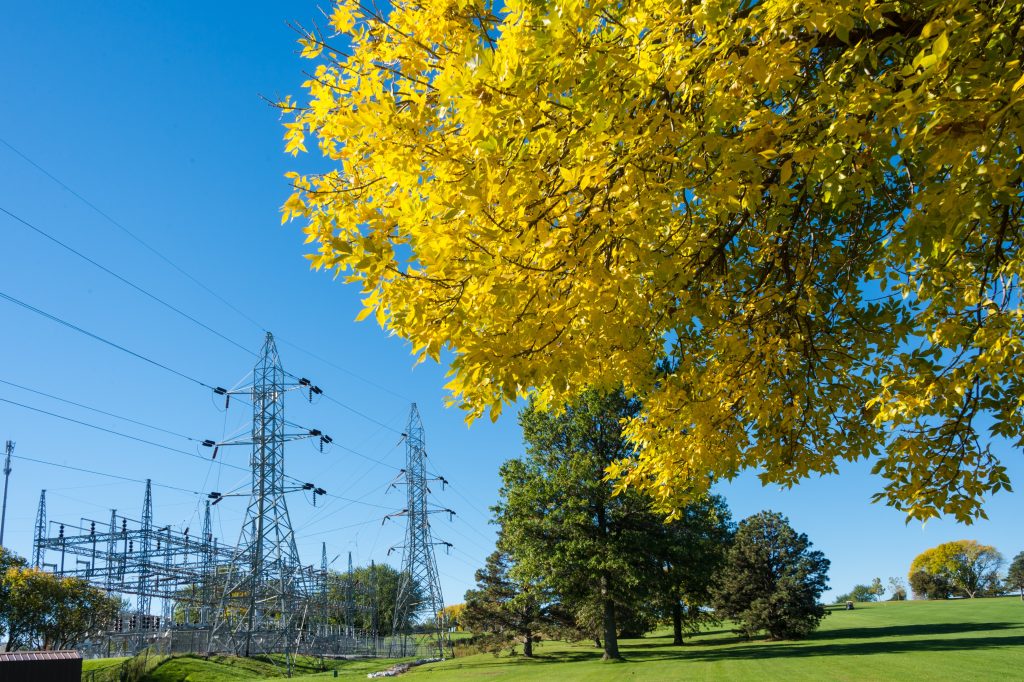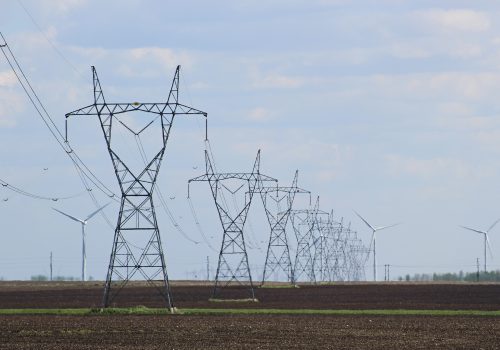Permitting reform remains a hot topic in Congress, with senators signaling continued willingness to work on the issue following a bipartisan bill passed in the June session. The debt ceiling-linked legislation reforms the National Environmental Policy Act (NEPA) to shorten the average time to permit a project but does not address a fundamental mismatch between where transmission infrastructure is located and where renewables need to be connected, as outlined in a previous EnergySource opinion piece. Despite substantial interest across the aisle for further permitting reform, the chances of new legislation any time soon are slim.
Amid Congress’ inability to address this issue, another entity, the Federal Energy Regulatory Commission (FERC), has taken up the reins. Last Thursday, FERC commissioners voted unanimously to pass an order to accelerate the interconnection process for new generators. The FERC interconnection rule is a good first step to ramp up US decarbonization efforts but should be supplemented with transmission planning reform to optimize future infrastructure deployment.
Before the new FERC rule, the debt ceiling bill failed to remedy two primary defects in the permitting system: a lack of regionally coordinated planning to upgrade the grid and the lengthening queue—now up to five years—for existing renewable projects to be connected to the grid. The FERC rule implements a “first-ready, first-served” process to cluster several proposed generating facilities into a single, 150-day interconnection study to improve efficiency and cost allocation. In addition, the rule increases the speed of queue processing by imposing deadlines and penalties for transmission providers.
Accelerating the interconnection process for new electricity generators would be a boon for US decarbonization efforts. Over 2030 gigawatts (GW) of generation and storage assets were in the US interconnection queue at the end of 2022, almost double the 1250 GW total generation capacity on the existing grid. Ninety-five percent of those projects are zero-carbon generators or battery storage.
FERC is also expected soon to finalize rulemaking on transmission planning, a critical but often overlooked solution to scale up renewable energy. Proactive planning can address transmission needs holistically by identifying where developers need to build projects and expediting permitting, interconnection, and other procedures in those areas.
Congress, federal agencies, and system operators all have a role in transmission planning reform. To hasten construction of transmission infrastructure, independent system operators and utilities must establish planning procedures rooted in wide stakeholder consultation and cost-benefit analyses in both regulated and deregulated markets. Congress should pass legislation that expands FERC’s authority to oversee and accelerate transmission planning, emulating how FERC’s exercise of such authority over gas pipelines has enabled the efficient distribution of the fuel to markets around the country. Transmission planning reform would accelerate renewable energy deployment and lower costs, savings that pass to consumers through lower energy bills.
Designate a lead agency to coordinate permitting
Permitting for transmission projects is far too slow to meet the goals of a clean electricity grid by 2035. Projects can wait over 15 years for approval, such as the TransWest Express Line and SunZia’s Southwest Transmission Project, which are now beginning construction that will take several more years. Transmission developers need to obtain approval through applications to multiple agencies that do not coordinate among themselves. For example, the NEPA process addressed in the debt ceiling bill only accounts for a fraction of the time taken to obtain permits.
No central agency exists to coordinate permitting for transmission lines, unlike for natural gas pipelines, where FERC has had sole approval authority since 1938. Expedited processes like the FAST-41 program, a coordinated review process with transparent deadlines, can help but are not comprehensive, leading to far longer permitting lead times for transmission projects compared to natural gas pipelines.
Under current law, states retain independent review and approval authority over transmission lines passing through their jurisdiction. FERC can only supersede the state-led process if projects are deemed to be in the national interest by the Department of Energy (DOE) under the Federal Power Act. Currently, no DOE-designated “national interest electric transmission corridors” exist, although the department released a Notice of Intent and Request for Information to formalize the designation process in May. The DOE is also conducting a National Transmission Planning Study that will help identify projects, procedures, and strategies that accelerate transmission build-out.
Extending FERC authority or executing the DOE-FERC national interest corridor framework would contribute to faster construction of sorely needed transmission infrastructure. If FERC were given sole authority over electric transmission lines, it could coordinate local, state, and federal permitting authorities to expedite the approval process. Once the DOE finalizes its planning study, FERC should move quickly to grant permits in national interest corridors.
Introduce transmission planning reform with multi-value cost-benefit analysis and expedited renewable energy zones
System operators should adopt innovative planning approaches that consider the cost-benefit rationale of upgrades and expansions and designate special zones with expedited project approvals. Currently, cost-benefit analysis is largely absent from transmission planning in the United States. Of the $20-25 billion spent each year on US transmission projects since 2013, utilities justified more than 90 percent of projects based solely on reliability needs with no consideration of economics or cost savings. The outcome has been steadily increasing electricity prices for consumers across the United States.
The US focus on reliability over all else has warped the electricity market and limited the cost savings new infrastructure could bring to consumers. Instead, system operators should implement multi-value analysis for energy infrastructure projects to fully capture the potential benefits and relative costs. Transmission lines provide numerous benefits, including greater reliability and cost savings from increased capacity, competition, and flexibility, in addition to delivering progress on decarbonization. The current standard planning process does not consider these diverse variables when building new transmission. While natural gas generators use the reliability argument to facilitate permitting for their projects, multiple studies show that a 70 to 90 percent clean electricity grid can remain reliable while providing the other aforementioned benefits.
System operators using multi-value analyses in their planning have found that adding renewables to the system lowers energy bills for consumers. For instance, the Midcontinent System Operator in the Midwest and Southern United States projected $23.2 to $52.2 billion in net benefits from new transmission at a cost of $14.1 to $16.8 billion. A Lawrence Berkeley National Laboratory study showed that potential cost savings from new electric transmission lines were higher in 2022 than in any year since 2012.
Pre-approving areas for renewable development is another way legislators can accelerate permitting. The Australian Energy Market Operator designated 67 renewable energy zones in 2022, forecasting that building 6,124 miles of transmission would lead to 28 billion AUD in net market benefits at a cost of 12.7 billion, savings which would pass to consumers via lower electric bills. Designated renewable areas and pre-planned transmission line studies are also practiced under the European Union’s Renewable Acceleration Areas and the Electricity Reliability Council of Texas’ Competitive Renewable Energy Zones. Both the European and Texan programs have been successful. The European Union forecasts €9 billion per year in savings from 2025 to 2040. Texas has the most wind energy in the nation and the second-most solar generation behind California. Proactive system planning accelerates renewable adoption on a cost-competitive basis.
Beyond the new FERC rule
Thousands of gigawatts of renewable energy generation projects are ready to interconnect once transmission lines get to them. The requirement that transmission providers conduct cluster studies for interconnection requests and the new deadlines under the new FERC order will accelerate renewable deployment. However, further work is needed to enshrine forward-thinking, cost-effective transmission planning procedures across the United States.
Ken Berlin is a senior fellow and the director of the Financing and Achieving Cost Competitive Climate Solutions Project at the Atlantic Council Global Energy Center
Frank Willey is a project assistant at the Atlantic Council Global Energy Center
Meet the authors
Related content
Learn more about the Global Energy Center

The Global Energy Center develops and promotes pragmatic and nonpartisan policy solutions designed to advance global energy security, enhance economic opportunity, and accelerate pathways to net-zero emissions.
Image: Electric system in Lincoln, Nebraska





